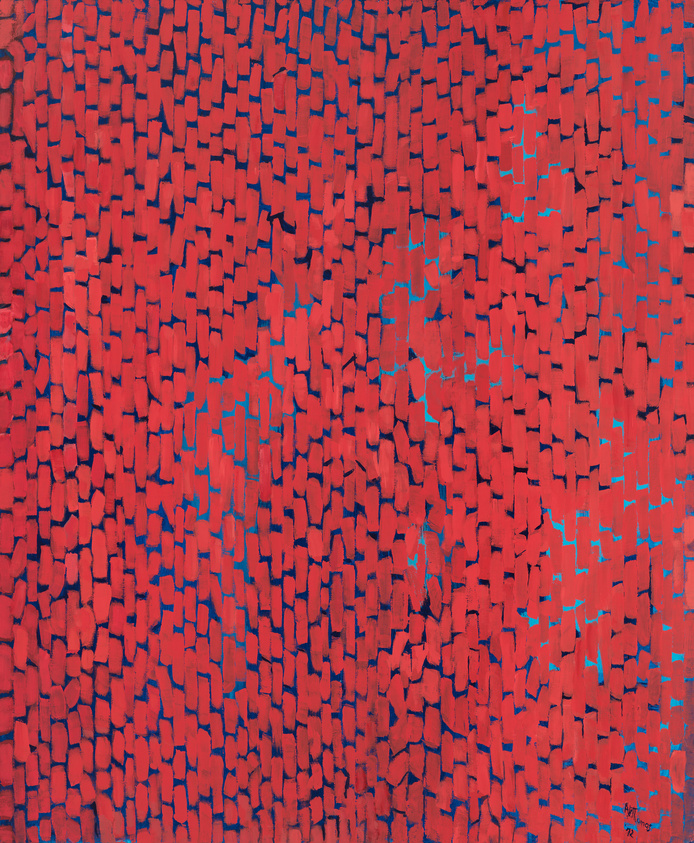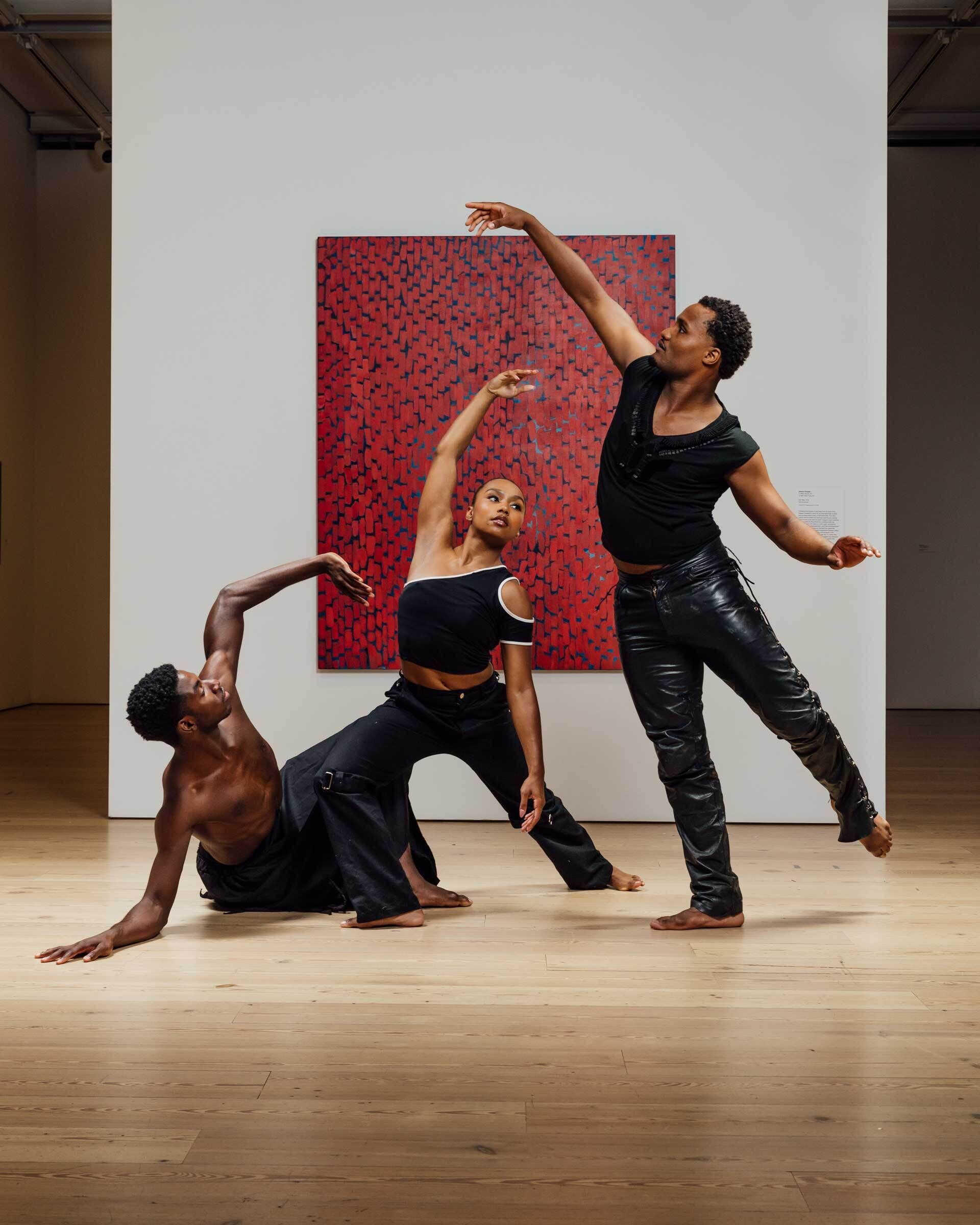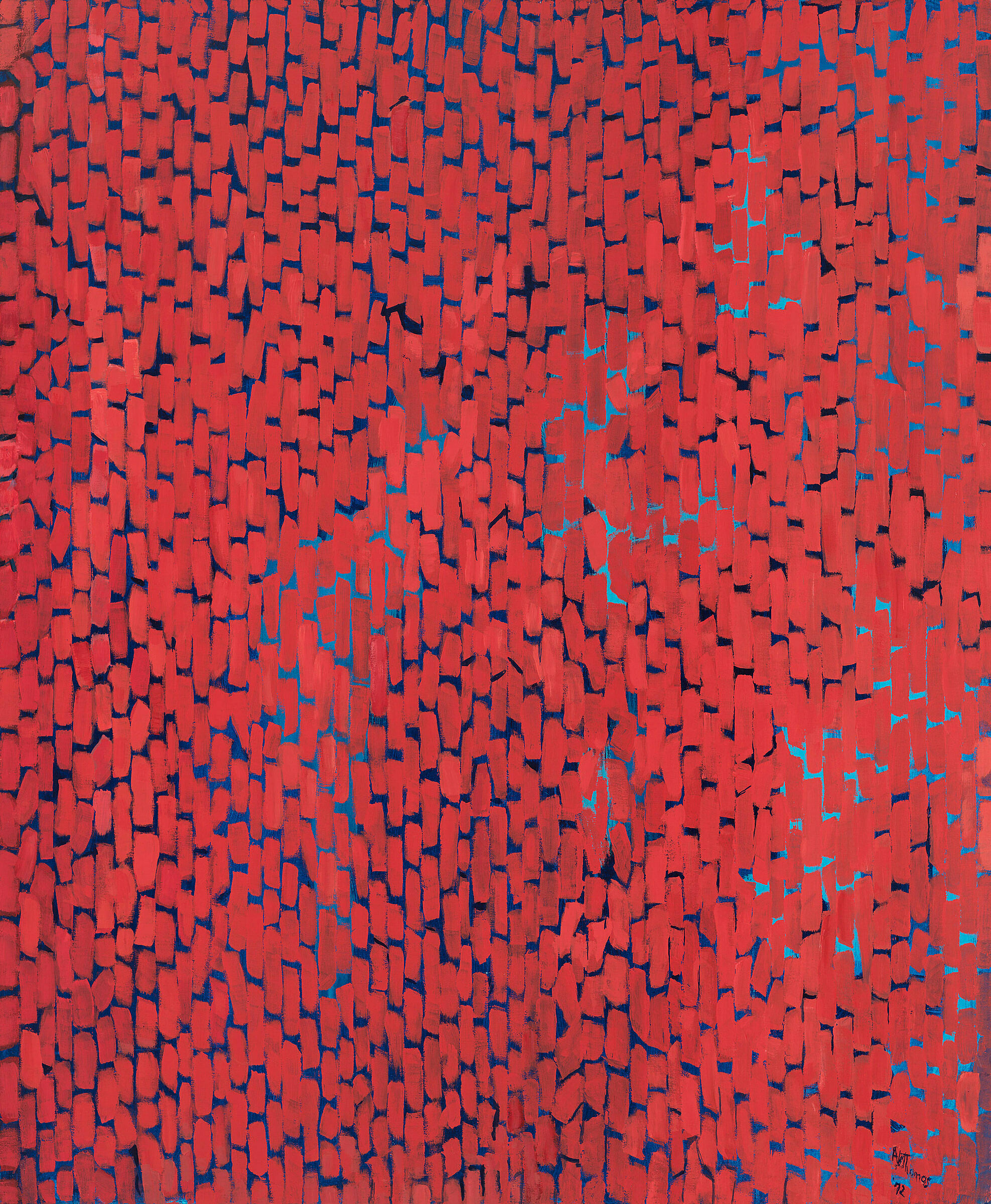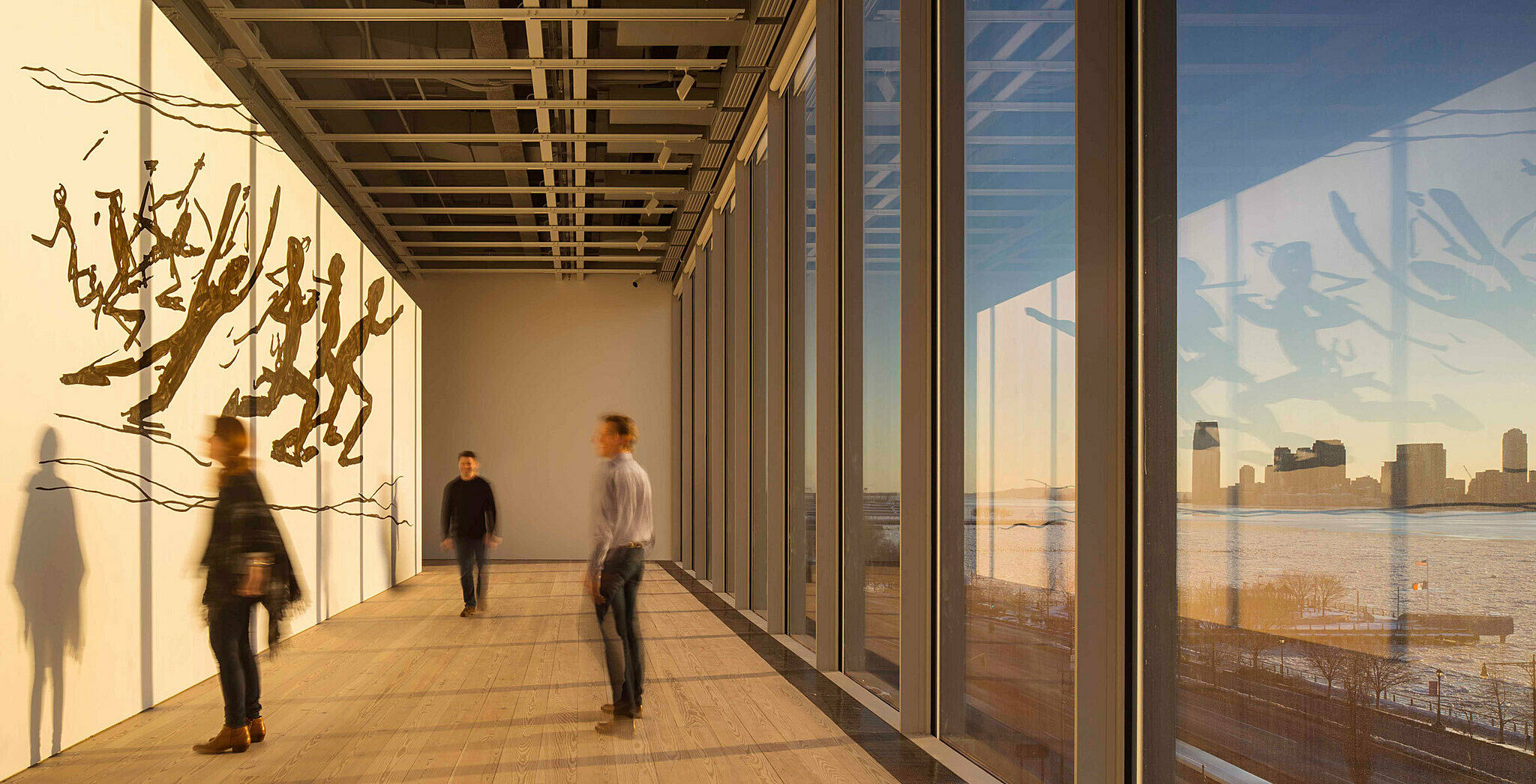On view
Floor 7
Date
1972
Classification
Paintings
Medium
Acrylic on canvas
Dimensions
Overall: 69 1/4 × 57 1/8in. (175.9 × 145.1 cm)
Accession number
72.58
Credit line
Whitney Museum of American Art, New York; purchase, with funds from The Hament Corporation
Rights and reproductions
© Estate of Alma Thomas (Courtesy of the Hart Family)/Artists Rights Society (ARS), New York
Visual description
Alma Thomas, Mars Dust, 1972. Mars Dust is an acrylic painting on canvas. The painting measures 69 ¼ inches tall by 57 ⅛ inches wide. The background of the painting is primarily a cool, dark blue with lighter blue tones and tints coalescing into washy expanses. On top of the blue, hundreds of short, warmer, red vertical brush strokes rest in a dazzling array. These marks are each about the size of an adult thumb. Not all of the reds are the same tint; some of the strokes are a whisper whiter than others. The brush strokes are deliberate and purposeful, averaging in similar thicknesses though some are slightly longer than others. The brush strokes are opaque and bristle marks are not apparent. The strokes are ordered so that sometimes they touch side to side (and very rarely top to bottom), often leaving small spaces between them, like vertically arranged bricks. These small spaces allow the blues to poke through, appearing as if seen through a sieve.
Thomas strikes a delicate and evocative balance in her use of positive and negative space. This texture brings about the illusion of dust storms on mars placed vertically, as if the viewer is peering down upon them.
Thomas cites the scientific advancements of the “space age” and color television as being pivotal in the conception of her creativity, and as an influence for this painting. Knowing this, her use of color is especially important, reflecting the vibrancy that would have been broadcast on technicolor TV screens. The mutability of the painting’s surface makes a gentle gesture towards the realms that cannot be visually grasped, towards the unknown hopes, aspirations, dreams, and illusions that lie in humankind’s probing of the universe. This question may point to the wonders of space lying not in what we know, but in what we cannot know.
Audio
-
Alma Thomas, Polvo de Marte, 1972
In “Untitled” (America) (Kids, Spanish)
0:00
Alma Thomas, Polvo de Marte, 1972
0:00
Narrador: Alma Thomas llamó a este cuadro Polvo de Marte. ¿Por qué crees que lo llamó así? Quizás hayas oído que a Marte a veces se le llama el Planeta Rojo. En condiciones adecuadas, ¡incluso se puede ver su color sin telescopio! Cuando Thomas pintó este cuadro en 1972, hacía poco que se había conseguido fotografiar Marte de cerca. Algunas de las imágenes mostraban tormentas de polvo rojo en remolino sobre la superficie del planeta. A Thomas le fascinaron esas imágenes. ¿Saber esto cambia tu perspectiva del cuadro? Fíjate en cómo las marcas rojas parecen flotar sobre el fondo y en los diferentes tonos de azul que ha utilizado. ¿Ves movimiento en la composición? Si es así, ¿cómo lo describirías? Si has venido hoy con alguien, ¡cuéntale lo que piensas!
-
0:00
Descripción verbal: Alma Thomas, Polvo de Marte, 1972
0:00
Narrador: Alma Thomas, Polvo de Marte, 1972. Polvo de Marte es una pintura acrílica sobre lienzo. La pintura mide 1.7 metros de alto por 1.45 metros de ancho. El fondo de la pintura es principalmente de un azul frío y oscuro con tonos y matices azules más claros que se fusionan en extensiones difuminadas. Sobre el azul, cientos de pinceladas verticales cortas y más cálidas de color rojo descansan en una deslumbrante disposición. Cada una de estas marcas tiene aproximadamente el tamaño del pulgar de un adulto. No todos los rojos son del mismo tono; algunas pinceladas son ligeramente más blancas que otras. Las pinceladas son deliberadas y decididas, con un grosor similar en su mayoría, aunque algunas son ligeramente más largas que otras. Las pinceladas son opacas y no se aprecian marcas de cerdas. Los trazos están ordenados de manera que a veces se tocan entre sí de lado a lado (y muy raramente de arriba abajo), dejando a menudo pequeños espacios entre ellos, como ladrillos dispuestos verticalmente. Estos pequeños espacios permiten que el azul se asome, como si se viera a través de un tamiz.
Thomas logra un equilibrio delicado y evocador en su uso del espacio positivo y negativo. Esta textura crea la ilusión de tormentas de polvo en Marte colocadas verticalmente, como si el espectador las estuviera contemplando desde arriba.
Thomas cita los avances científicos de la “era espacial” y la televisión en color como fundamentales en la concepción de su creatividad y como influencia para esta pintura. Sabiendo esto, su uso del color es especialmente importante, ya que refleja la vitalidad que se habría transmitido en las pantallas de televisión en tecnicolor. La variabilidad de la superficie de la pintura hace un gesto suave hacia los ámbitos que no pueden ser captados visualmente, hacia las esperanzas, las aspiraciones, los sueños y las ilusiones desconocidas que yacen en la exploración del universo por parte de la humanidad. Esta pregunta puede apuntar a las maravillas del espacio que no residen en lo que sabemos, sino en lo que no podemos saber.
-
0:00
Alma Thomas, Mars Dust, 1972
0:00
Narrator: Alma Thomas called this painting Mars Dust. Can you imagine why? Maybe you’ve heard that Mars is sometimes called the Red Planet. Under the right conditions, you can even see its color without a telescope! When Thomas made this painting in 1972, it had just recently become possible to take photos of Mars up close. Some of the pictures showed windstorms of red dust swirling over the surface of the planet. Thomas found these images fascinating. Does knowing that change how you see the painting? Notice the way the red marks seem to hover over the background, and the different shades of blue that she has used here. Do you see motion in the composition? And if you do, how would you describe it? If you came here with someone today, tell them what you think!
-
0:00
Alma Thomas, Mars Dust, 1972
0:00
Lauren Haynes: So this work, Mars Dust, was created in 1972.
Narrator: Lauren Haynes is the Director of Curatorial Affairs at the Queens Museum. In 2015 she discussed this work by Alma Thomas as part of a series of gallery talks at the Whitney, called 99 Objects. You can listen to all of these lectures on our website.
Lauren Haynes: With this work, which has the cobalt blue and the darker blue underlay with the red bands that she made using an elastic band to sort of create the layers. And the different levels of red are her interpretation. I think of dust and this dust storm and this very overwhelming way that the color red is taking over this canvas and how the dust sort of took over Mars, which we know as the red planet.
In 1969, around the Apollo space missions, when we sent the first American astronauts to the moon, and there was a whole series of different landings and explorations, Alma Thomas got very caught up in that. She was really interested in this idea of space, but also the way that technology opened the door for everyone to be able to see what was going on. She has a really great quote: “Today not only can our great scientists send astronauts to and from the moon to photograph its surface and bring back samples of rocks and other materials, but through the medium of color television, all can actually see and experience the thrill of these adventures. These phenomena set my creativity in motion.”
-
Alma Thomas, Mars Dust, 1972
In “Untitled” (America) and In the Balance: Between Painting and Sculpture, 1965–1985 (Spanish)
0:00
Alma Thomas, Mars Dust, 1972
0:00
Lauren Haynes: Esta obra, Mars Dust, fue creada en 1972.
Narrator: Lauren Haynes es la directora de Asuntos Curatoriales del Queens Museum. En 2015, analizó esta obra de Alma Thomas como parte de una serie de charlas de galería en el Whitney, llamada 99 Objects. Puede escuchar todas estas charlas en nuestro sitio web.
Lauren Haynes: En esta obra, el azul cobalto y el azul más oscuro están debajo de las bandas rojas que creó con una bandita elástica, para formar las distintas capas. Los distintos niveles de rojo constituyen su interpretación del polvo, de esta tormenta de polvo y de la manera tan sobrecogedora en que el rojo se apodera del lienzo y cómo el polvo “absorbió” a Marte, planeta que conocemos como el planeta rojo.
En 1969, más o menos en la época de las misiones espaciales Apolo—cuando vimos a los primeros astronautas estadounidenses sobre el suelo de la Luna y hubo toda una serie de distintos aterrizajes y exploraciones—Alma Thomas se involucró de lleno en este tema. Le fascinaba la idea del espacio, pero también el modo en que la tecnología nos abrió las puertas para que todos pudiésemos ver qué estaba ocurriendo. Tiene una cita que es maravillosa: “Nuestros excelentes científicos y astronautas no solo pueden ir a la Luna y volver para fotografiar la superficie y traer muestras de rocas y otros materiales, sino que gracias a la televisión a color, todos podemos ver y experimentar la emoción de estas aventuras. Estos fenómenos pusieron en marcha mi creatividad.”
-
Verbal Description: Alma Thomas, Mars Dust, 1972
In In the Balance: Between Painting and Sculpture, 1965–1985
0:00
Verbal Description: Alma Thomas, Mars Dust, 1972
0:00
Narrator: Alma Thomas, Mars Dust, 1972. Mars Dust is an acrylic painting on canvas. The painting measures 69 ¼ inches tall by 57 ⅛ inches wide. The background of the painting is primarily a cool, dark blue with lighter blue tones and tints coalescing into washy expanses. On top of the blue, hundreds of short, warmer, red vertical brush strokes rest in a dazzling array. These marks are each about the size of an adult thumb. Not all of the reds are the same tint; some of the strokes are a whisper whiter than others. The brush strokes are deliberate and purposeful, averaging in similar thicknesses though some are slightly longer than others. The brush strokes are opaque and bristle marks are not apparent. The strokes are ordered so that sometimes they touch side to side (and very rarely top to bottom), often leaving small spaces between them, like vertically arranged bricks. These small spaces allow the blues to poke through, appearing as if seen through a sieve.
Thomas strikes a delicate and evocative balance in her use of positive and negative space. This texture brings about the illusion of dust storms on mars placed vertically, as if the viewer is peering down upon them.
Thomas cites the scientific advancements of the “space age” and color television as being pivotal in the conception of her creativity, and as an influence for this painting. Knowing this, her use of color is especially important, reflecting the vibrancy that would have been broadcast on technicolor TV screens. The mutability of the painting’s surface makes a gentle gesture towards the realms that cannot be visually grasped, towards the unknown hopes, aspirations, dreams, and illusions that lie in humankind’s probing of the universe. This question may point to the wonders of space lying not in what we know, but in what we cannot know.
-
0:00
August 22, 2015
Lauren Haynes on Mars Dust by Alma Thomas0:00
Exhibitions
Installation photography
-
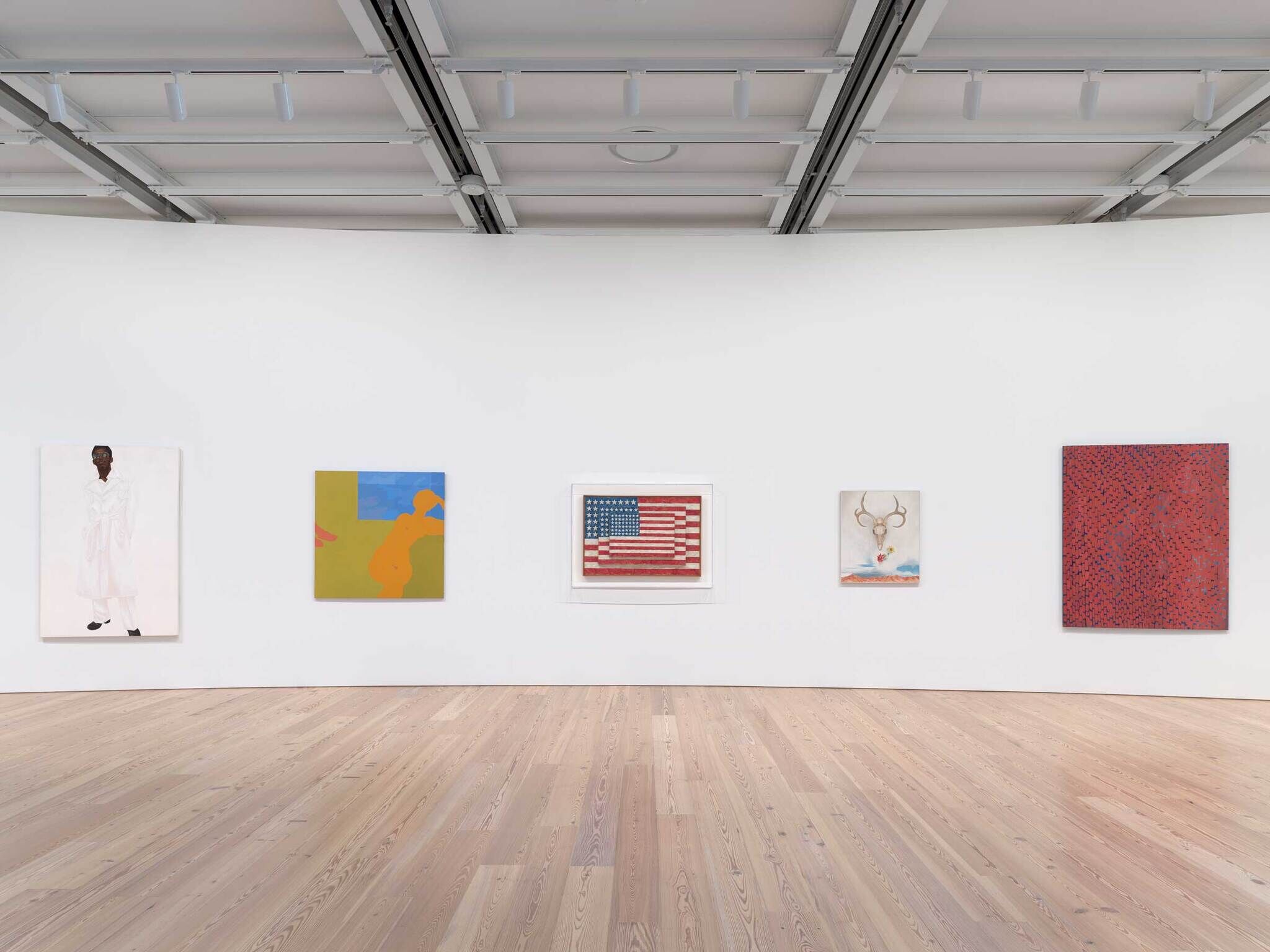

Installation view of “Untitled” (America) (Whitney Museum of American Art, New York, July 5, 2025-). From left to right: Barkley L. Hendricks, Steve, 1976; Kay WalkingStick, April Contemplating May, 1972; Jasper Johns, Three Flags, 1958; Georgia O’Keeffe, Summer Days, 1936; Alma Thomas, Mars Dust, 1972. Photograph by Ron Amstutz
From the exhibition “Untitled” (America)
-
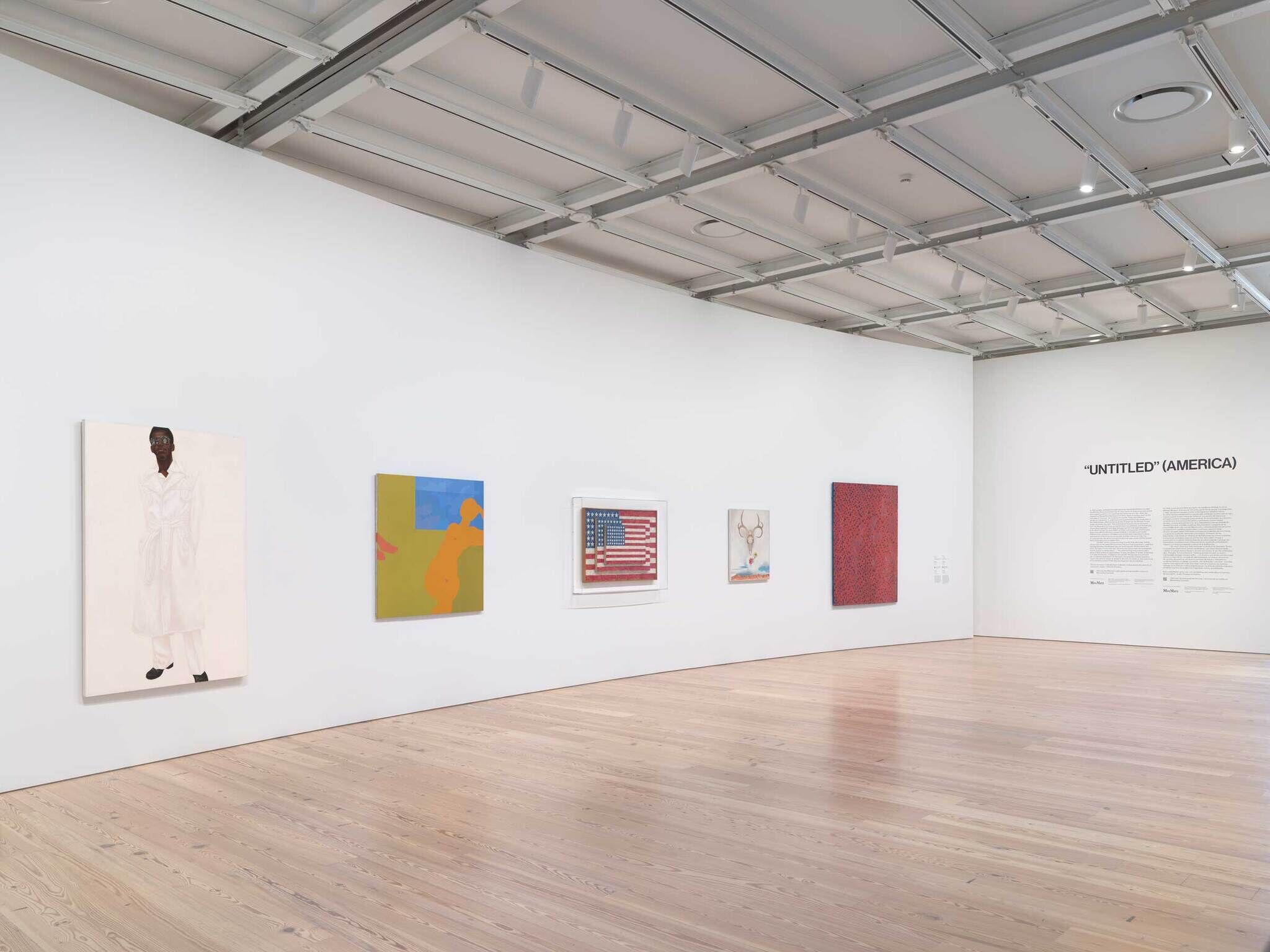

Installation view of “Untitled” (America) (Whitney Museum of American Art, New York, July 5, 2025-). From left to right: Barkley L. Hendricks, Steve, 1976; Kay WalkingStick, April Contemplating May, 1972; Jasper Johns, Three Flags, 1958; Georgia O’Keeffe, Summer Days, 1936; Alma Thomas, Mars Dust, 1972. Photograph by Ron Amstutz
From the exhibition “Untitled” (America)
-
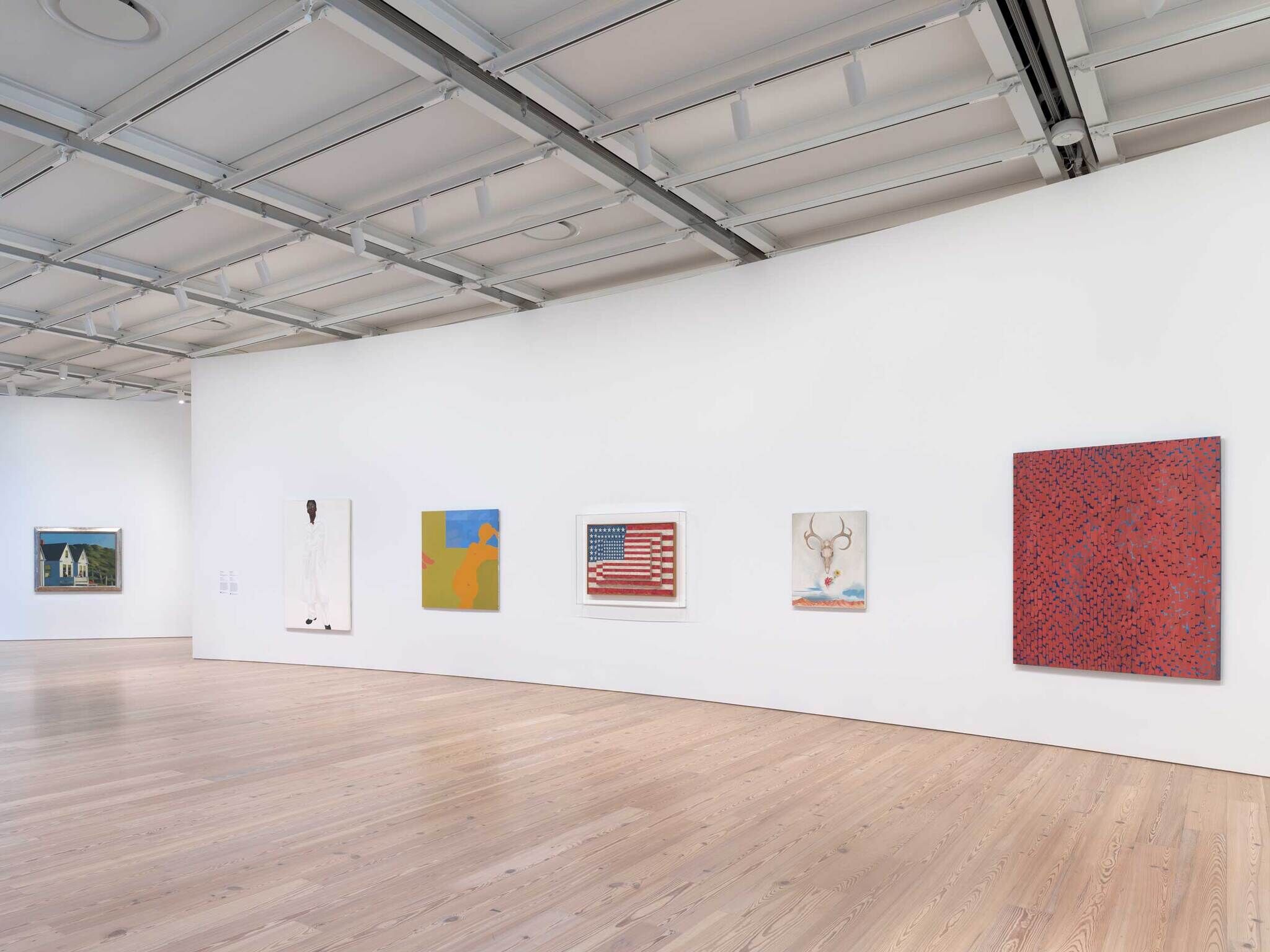

Installation view of “Untitled” (America) (Whitney Museum of American Art, New York, July 5, 2025-). From left to right: Edward Hopper, Second Story Sunlight, 1960; Barkley L. Hendricks, Steve, 1976; Kay WalkingStick, April Contemplating May, 1972; Jasper Johns, Three Flags, 1958; Georgia O’Keeffe, Summer Days, 1936; Alma Thomas, Mars Dust, 1972. Photograph by Ron Amstutz
From the exhibition “Untitled” (America)
-
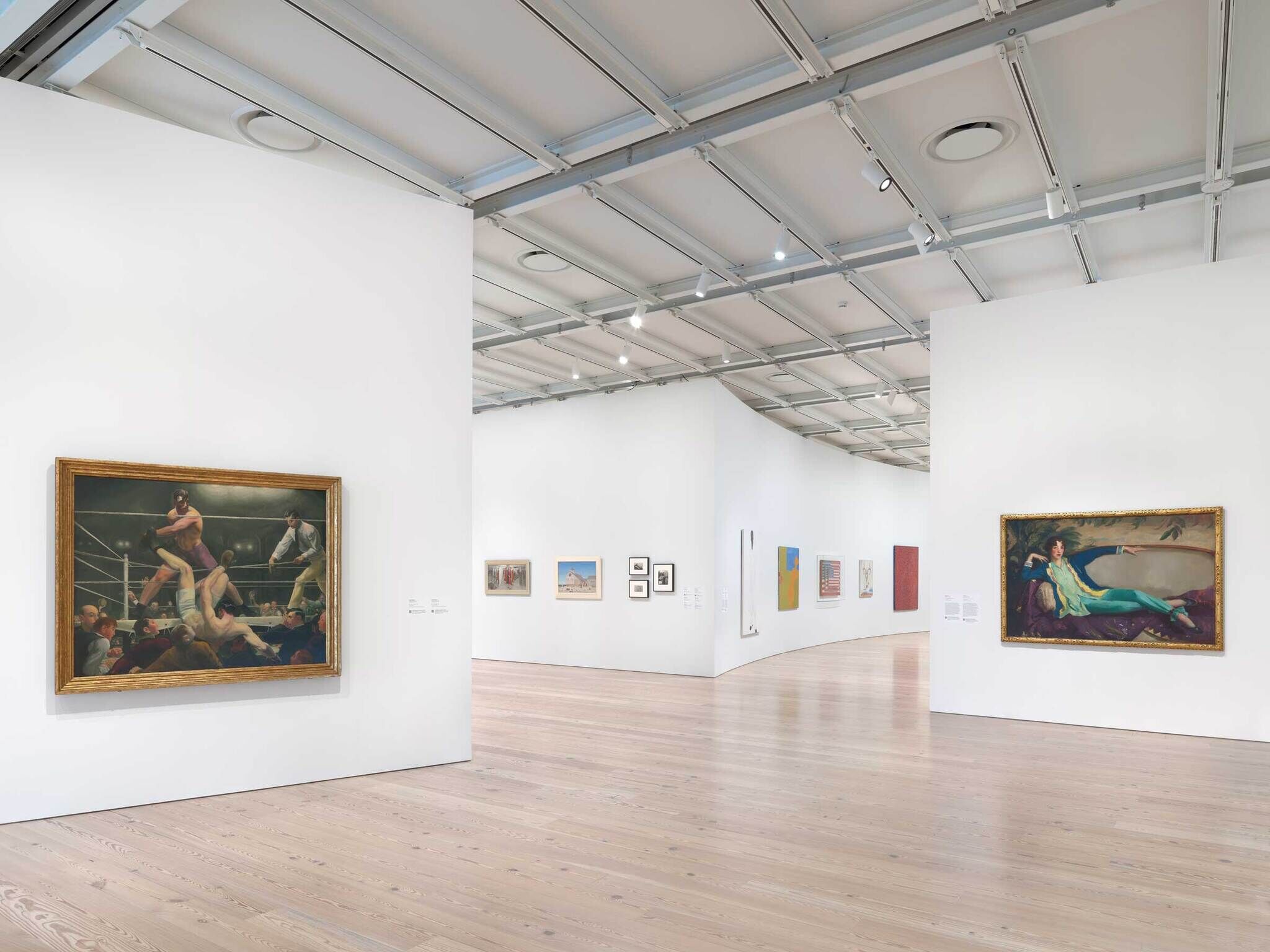

Installation view of “Untitled” (America) (Whitney Museum of American Art, New York, July 5, 2025-). From left to right: George Bellows, Dempsey and Firpo, 1924; George Tooker, The Subway, 1950; Margaret French, The Moon by Day, 1939; PaJaMa, Margaret French, George Tooker and Jared French, Nantucket, c. 1946; PaJaMa, Margaret French, Paul Cadmus and José Martinez, Fire Island, 1939; PaJaMa, Chuck Howard and Ted Starkowski, 1953; Barkley L. Hendricks, Steve, 1976; Kay WalkingStick, April Contemplating May, 1972; Jasper Johns, Three Flags, 1958; Georgia O’Keeffe, Summer Days, 1936; Alma Thomas, Mars Dust, 1972; Robert Henri, Gertrude Vanderbilt Whitney, 1916. Photograph by Ron Amstutz
From the exhibition “Untitled” (America)
-
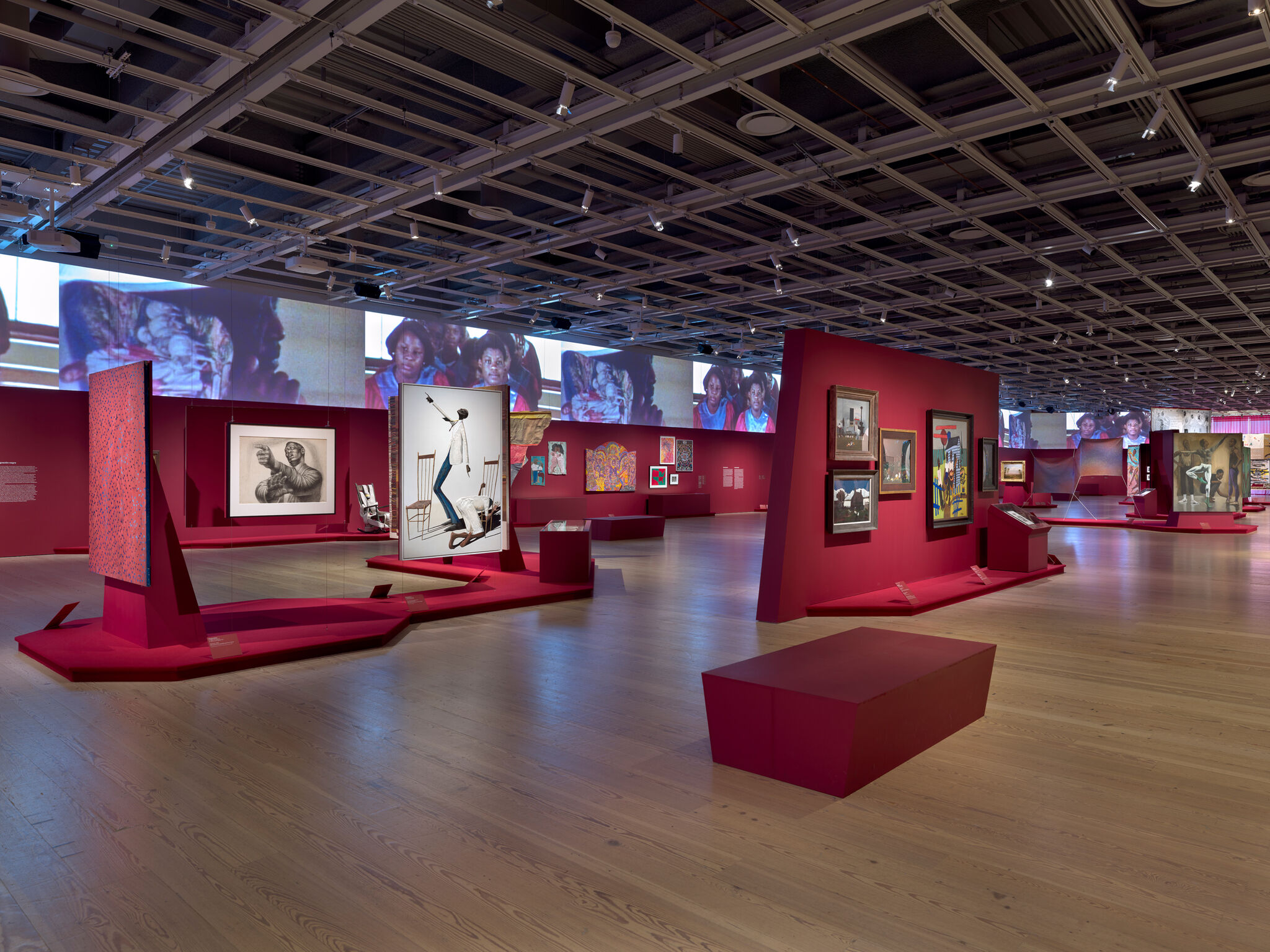

Installation view of Edges of Ailey (Whitney Museum of American Art, New York, September 25, 2024-February 9, 2025). From left to right: Alma Thomas, Mars Dust, 1972; Charles White, Preacher, 1952; Lonnie Holley, Sharing the Struggle, 2018; Benny Andrews, The Way to the Promised Land, 1994; Sam Doyle, Frank Capers, 2023; Sam Doyle, LeBe, 1970s; Wadsworth Jarrell, Together We Will Win, 1973; Faith Ringgold, United States of Attica, 1971; Wadsworth Jarrell, Revolutionary (Angela Davis), 1972; James Van Der Zee, Marcus Garvey Rally, 1924; Jeff Donaldson, Soweto/So We Too, 1979; Horace Pippin, School Studies, 1944; Horace Pippin, Cabin in the Cotton, c. 1931–37; Horace Pippin, Knowledge of God, 1944; William H. Johnson, At Home in the Evening, c. 1940; John Biggers, Sharecropper, 1945; Robert Duncanson, View of Cincinnati, Ohio from Covington, Kentucky, c. 1851; Joe Overstreet, Purple Flight, 1971; Emma Amos, Judith Jamison as Josephine Baker, 1985; Kerry James Marshall, Souvenir IV, 1998; Lynette Yiadom-Boakye, A Knave Made Manifest, 2024; Lynette Yiadom-Boakye, Fly Trap, 2024; Missa Marmalstein and other makers unknown, Block 1871 of the AIDS Memorial Quilt, 1987. Photograph by Ron Amstutz
From the exhibition Edges of Ailey
-
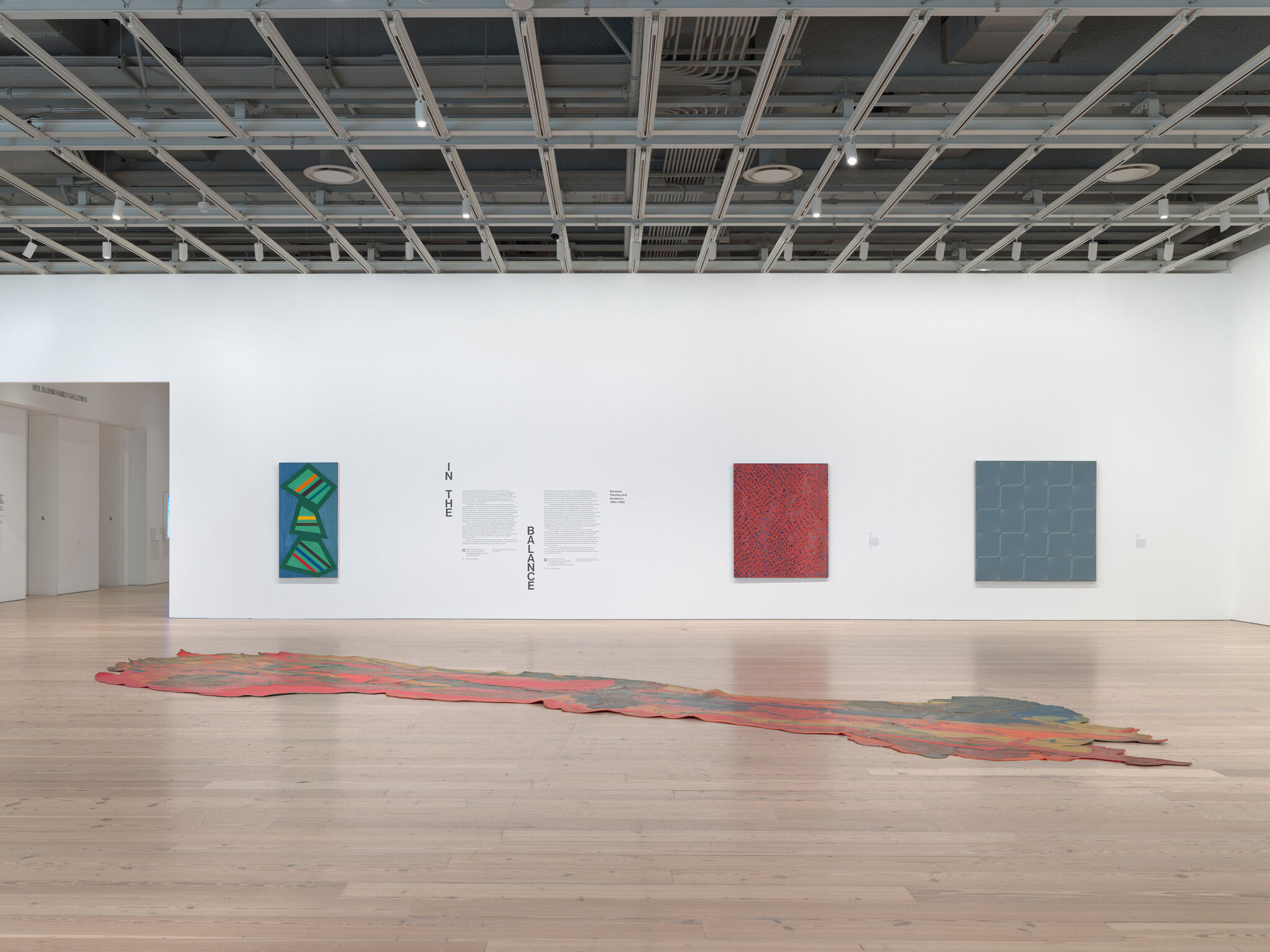

Installation view of In the Balance: Painting and Sculpture, 1965-1985 (Whitney Museum of American Art, New York, October 19, 2022 – March 5, 2023). From left to right: Freddy Rodriguez, Y me quedé sin nombre, 1964; Lynda Benglis, Contraband, 1969; Alma Thomas, Mars Dust, 1972; Edna Andrade, Cool Wave, 1974. Photograph by Ron Amstutz
From the exhibition In the Balance: Between Painting and Sculpture, 1965–1985
-
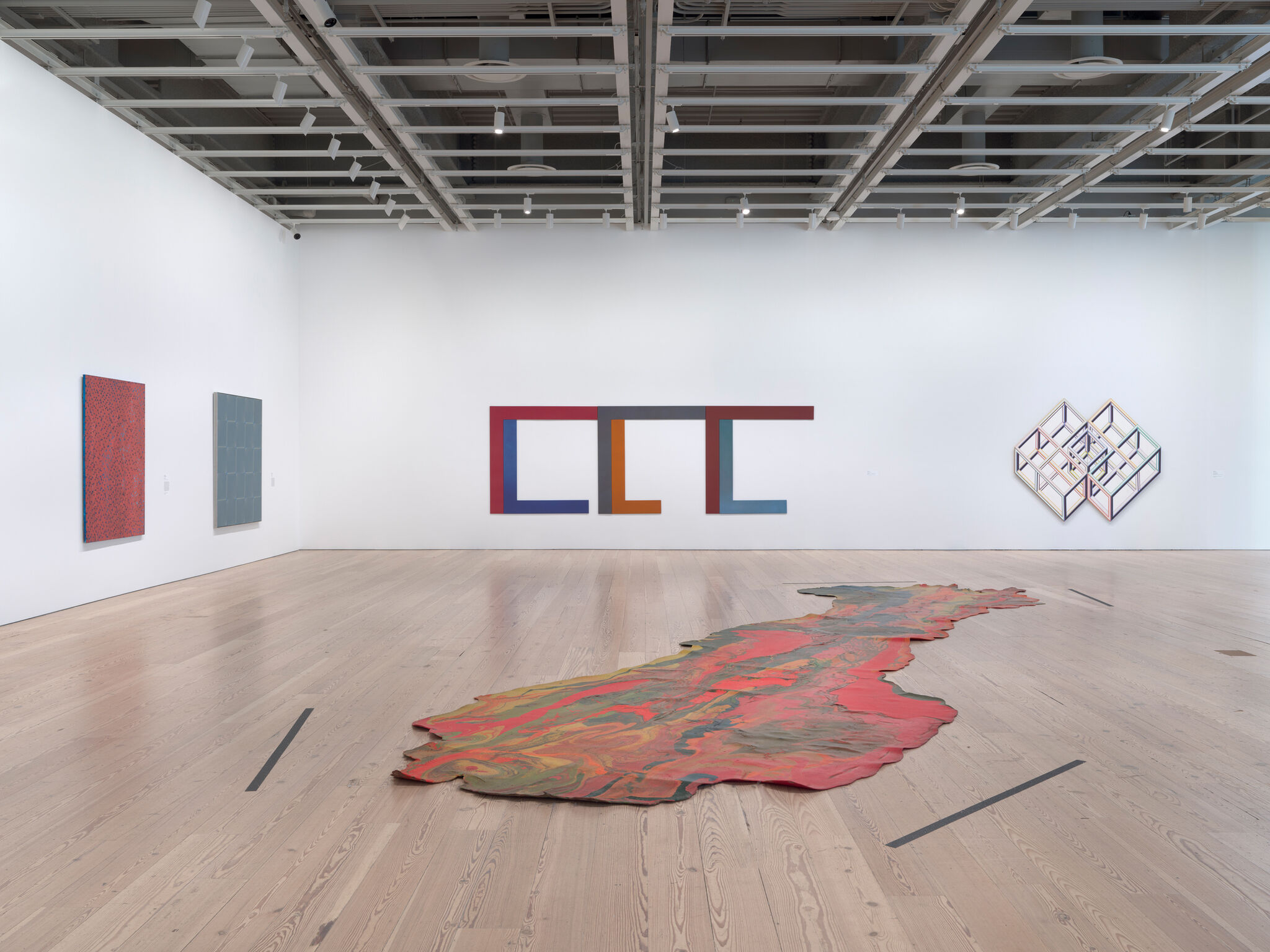

Installation view of In the Balance: Painting and Sculpture, 1965-1985 (Whitney Museum of American Art, New York, October 19, 2022 – March 5, 2023). From left to right: Alma Thomas, Mars Dust, 1972; Edna Andrade, Cool Wave, 1974; David Novros, No Title, 1969; Alvin Loving, Rational Irrationalism, 1969; Lynda Benglis, Contraband, 1969. Photograph by Ron Amstutz
From the exhibition In the Balance: Between Painting and Sculpture, 1965–1985
-
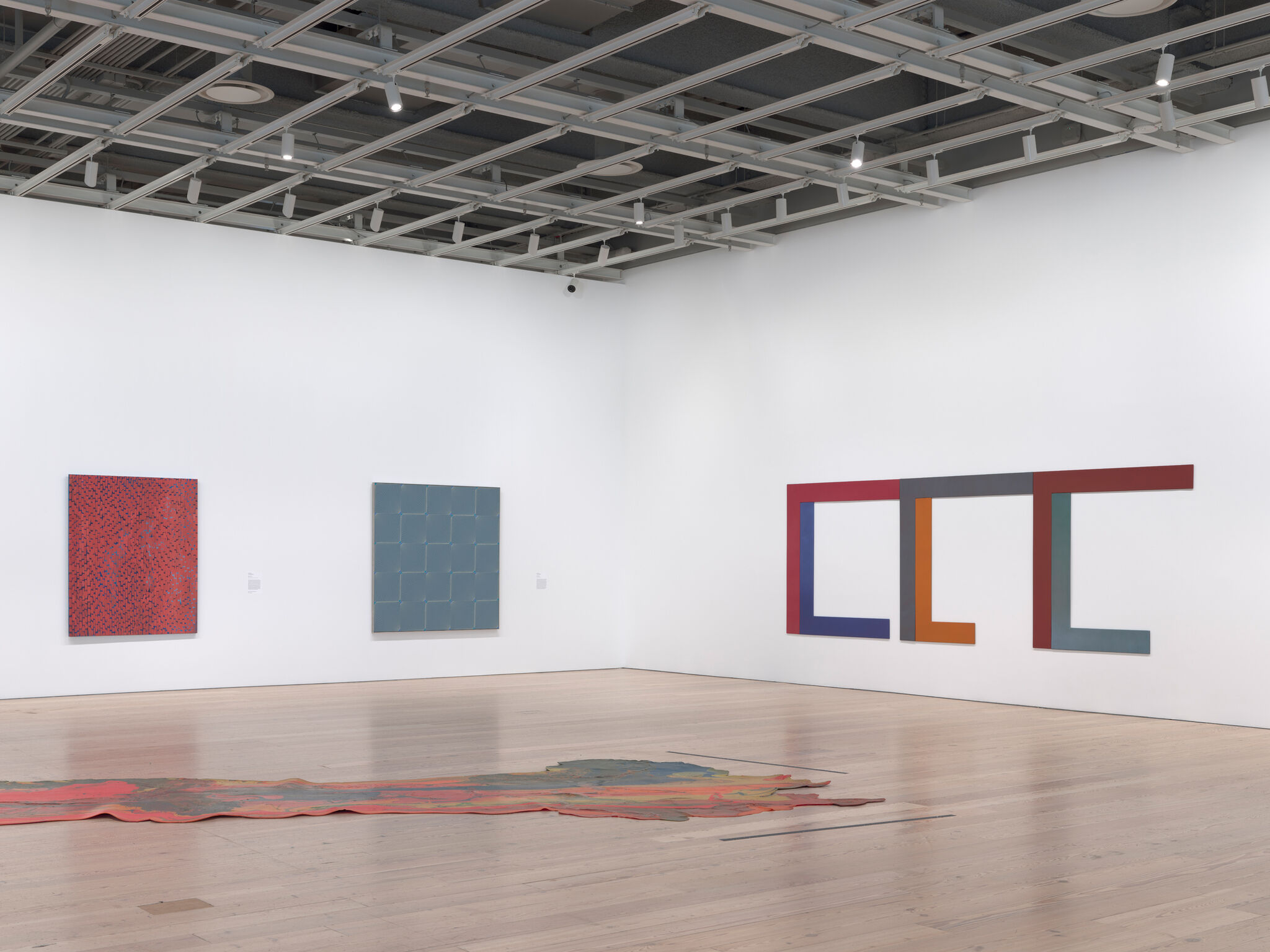

Installation view of In the Balance: Painting and Sculpture, 1965-1985 (Whitney Museum of American Art, New York, October 19, 2022 – March 5, 2023). From left to right: Alma Thomas, Mars Dust, 1972; Edna Andrade, Cool Wave, 1974; David Novros, No Title, 1969; Lynda Benglis, Contraband, 1969. Photograph by Ron Amstutz
From the exhibition In the Balance: Between Painting and Sculpture, 1965–1985

